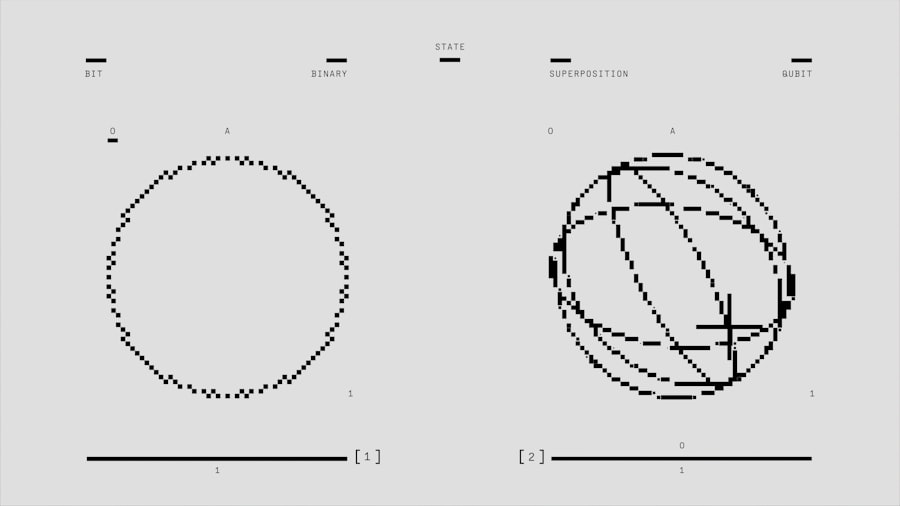The Reticular Activating System (RAS) is a complex network of neurons located in the brainstem that plays a crucial role in regulating wakefulness and sleep-wake transitions. It acts as a filter for the vast amount of sensory information your brain receives every second, determining what is important enough to be brought to your conscious awareness. This filtering process is essential because it allows you to focus on relevant stimuli while ignoring distractions.
For instance, when you are in a crowded room, the RAS helps you tune into a specific conversation while filtering out the background noise. Your RAS is also responsible for the state of alertness and attention you experience throughout the day. When you wake up in the morning, it activates to help you transition from sleep to wakefulness, preparing your mind and body for the day ahead.
This system is not just about filtering information; it also plays a role in your emotional responses and overall mental state. By understanding how the RAS functions, you can begin to appreciate its influence on your daily experiences and interactions.
Key Takeaways
- The Reticular Activating System (RAS) is a network of neurons in the brainstem that plays a crucial role in regulating arousal and attention.
- The RAS filters and processes sensory information, influencing how we perceive and interpret the world around us.
- Setting clear and specific goals can help the RAS prioritize information and resources to support goal achievement.
- Techniques such as visualization and positive thinking can effectively harness the power of the RAS to manifest desired outcomes.
- Overcoming limiting beliefs and enhancing focus can be achieved by activating and reprogramming the RAS through various strategies and practices.
How the Reticular Activating System Affects Your Perception
Your perception of reality is significantly shaped by the RAS. This system helps you prioritize what you pay attention to, which in turn influences how you interpret your surroundings. For example, if you have recently purchased a new car, you may start noticing that same model everywhere you go.
This phenomenon occurs because your RAS has been activated to recognize and filter information related to that specific car, making it more prominent in your awareness. Moreover, the RAS can affect your emotional perception as well. If you are feeling anxious or stressed, your RAS may heighten your sensitivity to negative stimuli, causing you to perceive situations as more threatening than they might actually be.
Conversely, when you are in a positive state of mind, your RAS can help you focus on uplifting experiences and opportunities. By recognizing how your RAS influences your perception, you can take steps to shift your focus toward more constructive thoughts and experiences.
The Role of the Reticular Activating System in Goal Setting

When it comes to setting and achieving goals, the RAS plays an integral role in helping you stay focused on what matters most to you. By clearly defining your goals and visualizing them, you can activate your RAS to filter out distractions and keep your objectives at the forefront of your mind. This process is akin to programming your brain to recognize opportunities that align with your aspirations, making it easier for you to take actionable steps toward achieving them.
Additionally, the RAS helps reinforce your commitment to your goals by creating a sense of urgency and motivation. When you consistently remind yourself of what you want to achieve, your RAS becomes more attuned to relevant information and experiences that can aid in reaching those goals. This heightened awareness can lead to serendipitous encounters or insights that propel you forward on your journey.
Techniques to Harness the Power of Your Reticular Activating System
| Technique | Description |
|---|---|
| Visualization | Creating mental images of your goals and desires to program your Reticular Activating System (RAS) to notice opportunities related to them. |
| Affirmations | Repeating positive statements about your goals and desires to influence your RAS and shift your mindset towards achieving them. |
| Goal Setting | Setting clear and specific goals helps your RAS to filter information and opportunities that align with your objectives. |
| Gratitude Practice | Expressing gratitude for what you have activates your RAS to notice more positive aspects in your life. |
| Focus and Attention | Directing your focus and attention towards your goals and desires helps your RAS to prioritize relevant information. |
To effectively harness the power of your RAS, consider implementing techniques that promote clarity and focus. One effective method is to create a vision board that visually represents your goals and aspirations. By surrounding yourself with images and words that resonate with what you want to achieve, you can activate your RAS to filter out distractions and keep your objectives in sight.
Another technique involves daily affirmations or positive self-talk. By consistently affirming your goals and capabilities, you reinforce the neural pathways associated with those beliefs, making it easier for your RAS to recognize opportunities that align with them. This practice not only enhances your focus but also cultivates a positive mindset that supports your journey toward success.
The Connection Between the Reticular Activating System and Motivation
Motivation is intricately linked to the functioning of your RAS. When you are motivated, your brain becomes more receptive to information that aligns with your goals and desires. The RAS acts as a gatekeeper, allowing relevant stimuli to enter your conscious awareness while filtering out distractions that may hinder your progress.
This means that when you are passionate about something, your RAS will help you stay focused on it, making it easier for you to take action. Conversely, when motivation wanes, the RAS may become less effective at filtering out distractions. You might find yourself easily sidetracked by irrelevant information or negative thoughts.
To counteract this, it’s essential to regularly revisit your motivations and remind yourself why you set certain goals in the first place. By reigniting that passion, you can re-engage your RAS and enhance its ability to support your journey.
Using Visualization to Activate Your Reticular Activating System

Visualization is a powerful tool for activating your RAS and enhancing goal achievement. When you vividly imagine yourself achieving a specific goal, you’re essentially training your brain to recognize opportunities related to that goal. This mental rehearsal creates neural pathways that make it easier for your RAS to filter relevant information from the noise around you.
To effectively use visualization, find a quiet space where you can concentrate without distractions. Close your eyes and picture yourself accomplishing your goal in as much detail as possible—what it looks like, how it feels, and even what sounds accompany that success. By immersing yourself in this experience regularly, you’re programming your RAS to be on high alert for anything that can help bring that vision into reality.
The Impact of Positive Thinking on the Reticular Activating System
Positive thinking has a profound impact on the functioning of your RAS. When you maintain an optimistic outlook, you’re more likely to notice opportunities and solutions rather than obstacles and problems. This shift in perspective allows your RAS to filter information in a way that supports growth and progress rather than stagnation.
Moreover, positive thinking can enhance resilience in the face of challenges. When setbacks occur, an optimistic mindset helps you view them as temporary hurdles rather than insurmountable barriers. This resilience activates your RAS to seek out alternative paths or solutions, keeping you focused on moving forward rather than dwelling on negativity.
Enhancing Focus and Attention through Reticular Activating System Activation
To enhance focus and attention through RAS activation, consider incorporating mindfulness practices into your daily routine. Mindfulness meditation encourages present-moment awareness, allowing you to train your brain to filter out distractions effectively. As you practice being fully present, you’re essentially strengthening the connections within your RAS that support concentration.
Additionally, setting specific intentions for each day can help activate your RAS in a targeted manner. By outlining what you want to accomplish each morning, you’re providing clear directives for your brain to follow throughout the day. This clarity helps minimize distractions and keeps you aligned with your priorities.
Overcoming Limiting Beliefs with the Reticular Activating System
Limiting beliefs can significantly hinder personal growth and achievement. However, by understanding how the RAS operates, you can work toward overcoming these mental barriers.
For instance, if you’ve always believed that you’re not good enough to pursue a particular career path, consciously affirming your capabilities can help shift this narrative. As you reinforce positive beliefs about yourself, your RAS will begin filtering information that supports these new perspectives while disregarding evidence that contradicts them.
The Reticular Activating System and the Law of Attraction
The Law of Attraction posits that like attracts like; therefore, focusing on positive thoughts can attract positive experiences into your life. Your RAS plays a pivotal role in this process by helping you identify opportunities aligned with your desires. When you’re clear about what you want and maintain a positive mindset, you’re essentially programming your RAS to filter out negativity while highlighting possibilities.
To leverage this connection further, practice gratitude regularly. By acknowledging what you’re thankful for, you’re reinforcing positive thoughts that activate your RAS in favor of abundance rather than scarcity. This shift in focus can lead to a more fulfilling life experience as you become more attuned to opportunities that resonate with your aspirations.
Practical Tips for Maximizing the Potential of Your Reticular Activating System
To maximize the potential of your RAS, consider implementing practical strategies into your daily life. Start by setting clear goals and writing them down; this act alone can help solidify them in your mind and activate your RAS accordingly. Additionally, create reminders or cues throughout your environment—such as sticky notes or digital alerts—that reinforce these goals.
Engaging in regular self-reflection is another effective way to enhance RAS function. Take time each week to assess your progress toward goals and adjust as necessary. This practice not only keeps you accountable but also allows for recalibration of focus based on evolving aspirations.
In conclusion, understanding and harnessing the power of the Reticular Activating System can significantly enhance various aspects of your life—from perception and motivation to goal achievement and personal growth. By actively engaging with techniques such as visualization, positive thinking, and mindfulness practices, you’re not only optimizing this vital brain function but also paving the way for a more fulfilling existence aligned with your true desires.
The Reticular Activating System (RAS) plays a crucial role in regulating wakefulness and sleep-wake transitions, acting as a gatekeeper for sensory information and maintaining alertness. For a deeper understanding of how the RAS influences cognitive functions and its implications in psychological practices, you can explore a related article on the topic. Visit unpluggedpsych.
com/’>Unplugged Psych for insightful discussions and resources that delve into the complexities of the RAS and its impact on mental health and behavior.
FAQs
What is the Reticular Activating System (RAS)?
The Reticular Activating System (RAS) is a network of neurons located in the brainstem that plays a crucial role in regulating arousal, attention, and consciousness.
What is the function of the Reticular Activating System?
The Reticular Activating System is responsible for regulating wakefulness, alertness, and the sleep-wake cycle. It also plays a role in filtering sensory information and directing attention to important stimuli.
How does the Reticular Activating System affect consciousness?
The Reticular Activating System is involved in maintaining consciousness and alertness. It helps to keep the brain in a state of wakefulness and awareness.
What happens if the Reticular Activating System is damaged?
Damage to the Reticular Activating System can result in disorders of consciousness, such as coma or persistent vegetative state. It can also lead to disturbances in arousal and attention.
Can the Reticular Activating System be influenced or trained?
The Reticular Activating System can be influenced through various means, such as sensory stimulation, meditation, and certain medications. Training and practices that promote focus and attention can also have an impact on the RAS.




